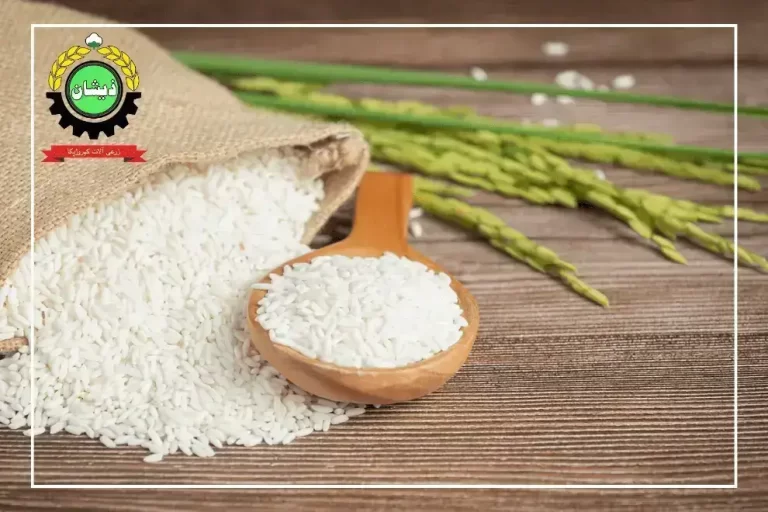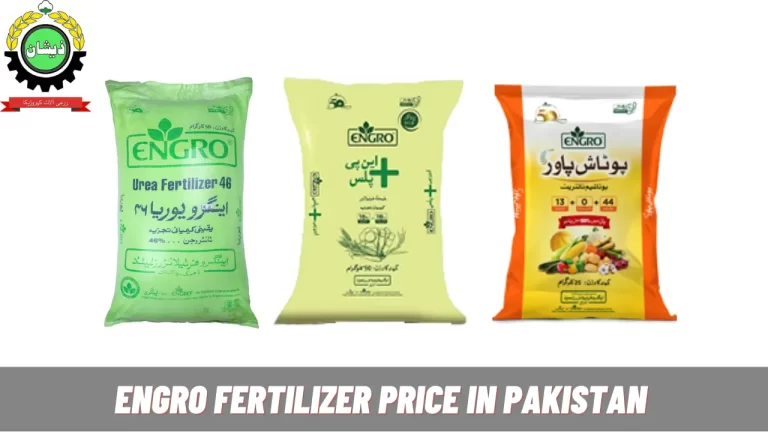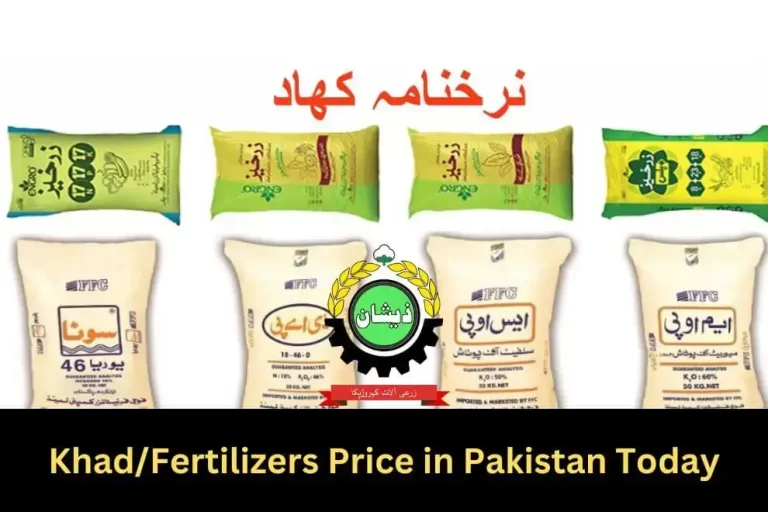Wheat Price in Pakistan Today 2025 | Gandum Rate per 40KG
As of January 2025, the wheat price in Pakistan varies from Rs. 2,900 to Rs. 3,600 per 40 KG. Wheat, a vital staple crop known as Gandum in Pakistan, holds significant importance for the country’s food security and overall economy. However, rising wheat prices in recent years have raised many concerns among farmers and consumers, creating hardship for both.
This article delves into a comprehensive analysis of Wheat Prices, shedding light on the factors, trends, and prospects that shape its dynamics.

Wheat Price in Pakistan Today List 2025
The prices of wheat in Pakistan vary across different cities and regions. The prices are influenced by various factors such as weather conditions, crop yield, demand and supply, government policies, and transportation costs. Farmers and traders usually sell wheat in local markets and mandis, where prices fluctuate daily depending on the prevailing conditions.
The Pakistani government also sets a support price for wheat each year to ensure that farmers get a fair price for their crops. Overall, wheat is an essential staple food in Pakistan and its prices have a significant impact on the livelihoods of many people, particularly those involved in agriculture and the food industry.
Wheat Price in Punjab:
| District / City | Minimum Prices | Maximum Prices |
|---|---|---|
| Yazman Mandi (یزمان) | 2,920 PKR | 3,675 PKR |
| Rawalpindi (راولپنڈی) | 2,900 PKR | 3,600 PKR |
| Dera Ghazi Khan (ڈیرہ غازی خان) | 2,950 PKR | 3,690 PKR |
| Haroonabad (ہارون آباد) | 2,910 PKR | 3,680 PKR |
| Chishtian (چشتیاں) | 2,980 PKR | 3,625 PKR |
| Sahiwal (ساہیوال) | 2,990 PKR | 3,630 PKR |
| Khanpur (خان پور) | 2,960 PKR | 3,610 PKR |
| D. I. Khan (ڈیرہ اسماعیل خان) | 2,960 PKR | 3,680 PKR |
| Pakpattan Sharif (پاک پتن) | 2,930 PKR | 3,600 PKR |
| Lodhran (لودھراں) | 2,930 PKR | 3,690 PKR |
| Rajanpur (راجن پور) | 2,950 PKR | 3,660 PKR |
| Faisalabad (فیصل آباد) | 2,960 PKR | 3,680 PKR |
| Maroot (مروٹ) | 2,950 PKR | 3,600 PKR |
| Okara (اوکاڑہ) | 2,960 PKR | 3,680 PKR |
| Sheikhupura (شیخوپورہ) | 2,900 PKR | 3,690 PKR |
| Fortabbas (فورٹ عباس) | 2,940 PKR | 3,690 PKR |
| Mian Channu (میاں چنّوں) | 2,950 PKR | 3,620 PKR |
| Sargodha (سرگودھا) | 2,990 PKR | 3,620 PKR |
| Burewala (بورےوالا) | 2,700 PKR | 3,670 PKR |
| Gujranwala (گوجرانوالہ) | 2,900 PKR | 3,670 PKR |
| Bahawalnagar (بہاولنگر) | 2,900 PKR | 3,690 PKR |
| Chowk Azam (چوک اعظم) | 2,940 PKR | 3,610 PKR |
| Dunga Bunga (ڈنگہ بونگہ) | 2,910 PKR | 3,650 PKR |
| Minchanabad (منچن آباد) | 2,920 PKR | 3,680 PKR |
| Rahim Yar Khan (رحیم یار خان) | 2,940 PKR | 3,620 PKR |
| Islamabad (اسلام آباد) | 2,900 PKR | 3,600 PKR |
| Ali Pur (علی پور) | 2,970 PKR | 3,680 PKR |
| Multan (ملتان) | 2,950 PKR | 3,640 PKR |
| Layyah (لیہ) | 2,970 PKR | 3,620 PKR |
| ArifWala (عارف والا) | 2,940 PKR | 3,685 PKR |
| Lahore (لاہور) | 2,950 PKR | 3,640 PKR |
| Sadiqabad (صادق آباد) | 2,990 PKR | 3,640 PKR |
| Bhakkar (بکھر) | 2,960 PKR | 3,600 PKR |
| Chichawatni (چیچہ وطنی) | 2,920 PKR | 3,680 PKR |
| A.Pur Sharqia (احمد پور شرقیہ) | 2,950 PKR | 3,690 PKR |
| Malsi (میلسی) | 2,950 PKR | 3,680 PKR |
| Mianwali (میانوالی) | 2,950 PKR | 3,610 PKR |
| Toba Tek Singh (ٹوبہ ٹیک سنگھ) | 2,950 PKR | 3,600 PKR |
| Chowk Munda (چوک مُنڈا) | 2,960 PKR | 3,670 PKR |
| Hasilpur (حاصل پور) | 2,930 PKR | 3,610 PKR |
| Muzaffargarh (مظفر گڑھ) | 2,970 PKR | 3,690 PKR |
| Faqirwali (فقیروالی) | 2,930 PKR | 3,670 PKR |
| Khanewal (خانیوال) | 2,940 PKR | 3,620 PKR |
| Dunya Pur (دنیاپور) | 2,970 PKR | 3,690 PKR |
| Pattoki (پتّوکی) | 2,970 PKR | 3,680 PKR |
| Vehari (وہاڑی) | 2,950 PKR | 3,610 PKR |
| Kahror Pakka (کہروڑپکّا) | 2,960 PKR | 3,660 PKR |
| Bahawalpur (بہاولپور) | 2,920 PKR | 3,670 PKR |
| Fazil Pur (فضل پور) | 2,980 PKR | 3,670 PKR |
| Chakwal (چکوال) | 2,960 PKR | 3,680 PKR |
Read more about:
Wheat Price in Sindh:
| District / City | Minimum Rate | Maximum Rate |
|---|---|---|
| Karachi (کراچی) | 2,940 PKR | 3,660 PKR |
| Umarkot (عمرکوٹ) | 2,950 PKR | 3,640 PKR |
| Hyderabad (حیدرآباد) | 2,970 PKR | 3,660 PKR |
| Ghotki (گھوٹکی) | 2,980 PKR | 3,630 PKR |
| Tando Allah Yar (ٹنڈو اللہ یار) | 2,960 PKR | 3,640 PKR |
| Sanghar (سانگھڑ) | 2,950 PKR | 3,660 PKR |
| Mirpur Khas (میرپور خاص) | 2,970 PKR | 3,640 PKR |
| Jhuddo (جھڈو) | 2,900 PKR | 3,650 PKR |
| Nawab Shah (نواب شاہ) | 2,990 PKR | 3,620 PKR |
| Mehrabpur (محراب پور) | 2,900 PKR | 3,660 PKR |
| Shikarpur (شکارپور) | 2,940 PKR | 3,600 PKR |
| Kunri (کنری) | 2,980 PKR | 3,630 PKR |
| Tando M. Khan (ٹنڈو محمد خان) | 2,960 PKR | 3,660 PKR |
| Larkana (لاڑکانہ) | 2,950 PKR | 3,620 PKR |
| Dadu (دادو) | 2,950 PKR | 3,600 PKR |
| ShahdadPur (شہداد پور) | 2,940 PKR | 3,660 PKR |
| Sakrand (سکرنڈ) | 2,930 PKR | 3,630 PKR |
| Sukkur (سکھر) | 2,970 PKR | 3,650 PKR |
Wheat Price in KPK:
| KPK | Minimum Price | Maximum Price |
|---|---|---|
| Mardan (مردان) | 2,970 PKR | 3,640 PKR |
| Peshawar (پشاور) | 2,960 PKR | 3,650 PKR |
Wheat Rate in Balochistan
| District / City | Minimum Price | Maximum Price |
|---|---|---|
| Quetta (کوئٹہ) | 2,950 PKR | 3,660 PKR |
| Sibi (سبی) | 2,930 PKR | 3,680 PKR |
Introduction: The Importance of Wheat in Pakistan
Pakistan is an agricultural country, where about 60% of the population is directly or indirectly dependent on agriculture for their livelihood. Wheat is the staple food of the majority of the population, and it is also an important cash crop, accounting for about 13% of the total cropped area and 3% of the GDP. Pakistan is the 8th largest wheat producer in the world, with an average production of about 25 million tons per year. However, despite the high production, Pakistan is also a net importer of wheat, due to the high demand and low productivity.
Historical Trends of Wheat Price in Pakistan
The wheat price has been volatile over the years, with significant fluctuations in response to various factors. According to the Pakistan Bureau of Statistics, the average wholesale price of wheat per 40 kg bag in Pakistan was around PKR 1350 in 2015, which increased to PKR 1850 in 2018, and then decreased to PKR 1400 in 2021. However, these figures do not reflect the actual prices that farmers or consumers pay, as they may vary depending on the location, quality, and seasonality.
Causes of Fluctuations in Wheat Price
The wheat price in Pakistan is influenced by various factors, some of which are within the control of the government and others are beyond the control of the market. Some of the major causes of price fluctuations are as below:
Domestic Production
Pakistan’s wheat production heavily depends on climatic conditions and irrigation facilities. Therefore, any natural calamity, such as floods or drought, can significantly affect the country’s wheat production and, consequently, the price. Moreover, low yields due to outdated farming practices, inefficient use of inputs, and lack of proper post-harvest management also contribute to fluctuations in Kanak price in Punjab.
Global Supply and Demand
Pakistan is not self-sufficient in wheat production and imports a considerable amount of wheat to meet domestic demand. Therefore, any changes in global wheat supply and demand, such as an increase in demand or a decrease in supply, can affect the import price of wheat, leading to fluctuations in the domestic price.
Government Policies
The government of Pakistan heavily regulates the wheat market through various policies, including subsidies, procurement, and support prices. Any changes in these policies, such as an increase in support price or reduction in subsidies, can affect the wheat price. Moreover, government policies regarding imports and exports of wheat also play a crucial role in determining the domestic price.
Climate Change
Climate change is a significant factor contributing to fluctuations in wheat prices. Increasing temperatures, changing precipitation patterns, and extreme weather events can significantly impact wheat production, leading to reduced yields and higher prices.
Lack of Innovation and Technology
Wheat production in Pakistan has been stagnant for the past decade, and the yield per hectare is much lower than international standards. One of the main reasons for this is the lack of innovation and technology adoption in the agriculture sector, such as the use of modern seed varieties, irrigation systems, fertilizers, and pesticides. This not only affects the productivity and quality of wheat but also increases the cost of production, which is passed on to the consumers.
Impacts of Wheat Price Fluctuations in Pakistan
The wheat price fluctuations in Pakistan have far-reaching impacts on various stakeholders, including farmers, consumers, traders, and policymakers. Some of the major impacts are:
Farmers
- The farmers who produce wheat are directly affected by the price fluctuations, as it determines their income and livelihood. If the wheat rate in Punjab is high, they can earn more profits, but if it is low, they may not even recover their cost of production. This can lead to debt, distress, and migration to other occupations.
Consumers
- Consumers who consume wheat-based products, such as bread, chapatti, and pasta, are also affected by price fluctuations, as they determine their food expenses and nutrition. If the price is high, they have to spend more on food, which can reduce their purchasing power and increase the incidence of malnutrition and poverty.
Traders
- The traders who buy and sell wheat are also affected by price fluctuations, as they determine their profit margins and risks. If the wheat price is high, they can make more profits, but if it is low, they may incur losses or face market volatility. This can lead to market inefficiency and corruption, as some traders may resort to hoarding or speculation to manipulate the prices.
Policymakers
- The policymakers who formulate and implement wheat-related policies are also affected by price fluctuations, as they determine their political and economic agenda. If the price is high, they may face public pressure to reduce it through subsidies or price controls, which can distort the market and create fiscal burdens. Similarly, if the price is low, they may face resistance from the farmers and traders who demand more incentives and support.
Solutions for the Price Fluctuations
The wheat price fluctuations in Pakistan are a complex issue that requires a multifaceted approach from various stakeholders. Some of the solutions that can address the root causes of the problem are:
Increased Production
Pakistan has the potential to increase its wheat production through various measures, including the adoption of modern farming practices, efficient use of inputs, proper post-harvest management, and the development of climate-resilient varieties. If these measures are implemented, they can lead to increased wheat production, which can stabilize the domestic wheat price.
Technology Adoption
To increase wheat productivity and quality while decreasing production costs, Pakistan should implement modern agricultural technologies and practices. This may involve initiatives such as promoting the use of disease-resistant and high-yield seed varieties, introducing precision farming and mechanization, and offering capacity-building programs and extension services to farmers.
Trade Policy
To keep up with evolving global trends and domestic needs, Pakistan requires a flexible and balanced trade policy. Several measures can be taken towards this end, including reducing tariffs and non-tariff barriers on wheat imports and exports, negotiating trade agreements with neighboring countries and international organizations, and promoting value addition and diversification within the wheat sector.
Food Security
Pakistan needs to ensure food security for its population by ensuring the availability, accessibility, and affordability of wheat-based products. This can be done through various measures, such as maintaining an adequate buffer stock of wheat, implementing targeted subsidies and safety nets for vulnerable groups, and promoting the production and consumption of diversified and nutritious food items.
Conclusion about Wheat Price in Pakistan
The wheat price in Pakistan is subject to various factors, including domestic production, global supply and demand, government policies, and climate change. The rising prices have been a subject of concern for both farmers and consumers. However, there are possible scenarios where the price can stabilize, including increased production, global supply and demand, government policies, and climate-resilient farming practices. Therefore, it is essential to adopt a holistic approach to address the challenges facing the wheat sector in Pakistan.
Frequently Asked Questions (FAQs)
The wheat price in Pakistan varies according to the supply and demand conditions in the market. It is recommended to check the latest market rates from reliable sources.
Wheat prices are affected by various factors, such as weather conditions, production and supply chain inefficiencies, market distortions, and trade policies.
Farmers can cope with price fluctuations by adopting climate-resilient agriculture, using modern technologies and practices, diversifying their income sources, and having access to credit and insurance facilities.
Consumers can mitigate the impact of price fluctuations by diversifying their food choices, reducing food waste, and advocating for policy reforms that promote food security and affordability.






